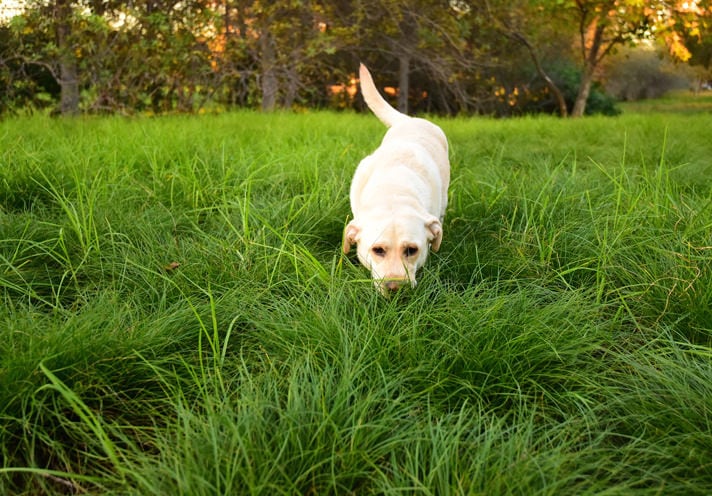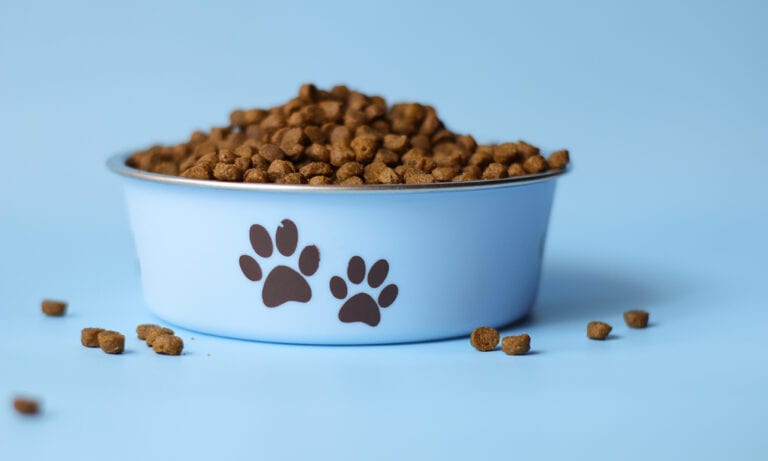Once your dog has mastered “sit” and “stay,” you may be tempted to start working on more advanced training techniques to work on with your pupper. Since dogs have an impeccable sense of smell, working with your dog to track by scent only makes sense.
You can teach your dog to follow a track or trail on the ground, to air scent and to identify scented objects. All three can be taught simultaneously because they employ similar scenting skills.
Read on to find out how to teach your dog to scent a track.
How to Train Your Dog to Track by Scent
-
Start Early in the Morning
To teach scenting a track, you need some treats and a grassy area, such as a baseball field or park. Although hot dogs are not the most nutritious food, I find they work best, and you won’t over stuff your dog’s belly. Begin early; many people start by 6 a.m. before anyone has walked on the grass.
-
Create a Treat Track
Have your dog sit or lie down and stay. Take a couple of inch-long pieces of hot dog and use your shoe to mash them into the grass. Make sure to crush the grass under the hot dogs, which will release a grass scent. Then, with the hot dog residue on the bottom of your shoe, walk a straight line away from your dog. Every six or ten feet, drop a piece of hot dog. Stop after about 20 feet and drop one of your gloves or one of your dog’s toys; your dog needs to find something at the end of the track. Drop another piece of hot dog on top of the item.
-
Command Your Dog to Find the Treats
Go back to your dog and release him from his stay, encouraging him to smell the ground where the hot dogs were. Tell your dog “Find it!” and let him sniff. If he begins to follow the track, praise him quietly by saying, “Good dog!” and let him lead the way. Don’t be too enthusiastic or you may distract the dog from his sniffing. Also, don’t try to lead him; let your dog figure it out.
At this point, your dog is following several scents: the trail of hot dogs, which helps motivate him, the crushed grass where you mashed the hot dogs and the crushed grass where you later stepped. Your dog is also following your individual scent, which he knows well because he smells your scent every day. But now your dog is learning to combine the scents, to follow them and to find the item at the end of the track.
-
Start Increasing the Length of the Track
When your dog successfully completes this trick, make another one by taking 10 steps to the side. If your dog is excited and having fun, you can do three or four short tracks per training session. As your dog improves over several sessions, make the track longer, add curves and corners, and drop several items along the way, but put the hot dog only on the one you want him to find. When making tracks longer or adding curves, use small pegs, stakes or flags to mark the track so you can tell if your dog is off track.
Air scenting requires your dog to find someone by sniffing the scents wafting through the air instead of following a track. Most search-and-rescue dogs have both skills; they can follow a track, but if people walking over the track spoil it, they can et also use their air-scenting skills.
For other training articles, check out:
Benefits of Nose Work Training for Dogs
How to Teach Your Dog to ‘Find It’
How to Teach a Dog to Fetch
Posted by: Chewy Editorial
Featured Image: Via mauinow1/iStock/Thinkstock
Share:









